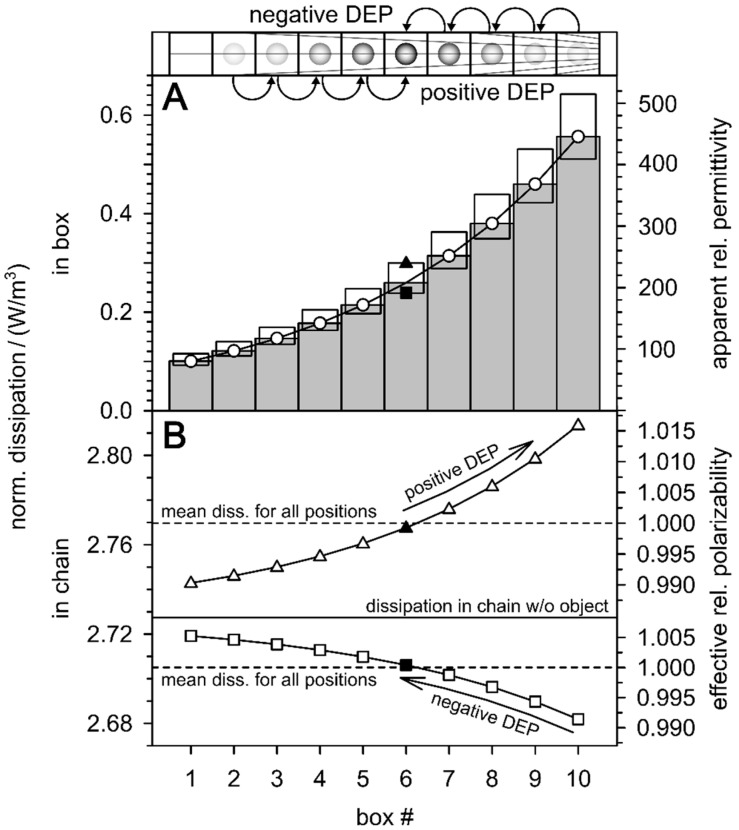Figure 6.
Illustration of DEP-induced changes in field-normalized dissipation in a box chain subjected to an inhomogeneous low-frequency field according to the values of Table 1. (A): In the absence of the object, the dissipation in the direction of the field gradient increases with the square of the field strength (circles, gray columns). In the presence of a high (triangles, = 1 S/m) or low polarizable sphere (squares, = 0.01 S/m), the active dissipation in the box is increased or decreased, respectively. The work of charging has the same field strength dependence (Equations (15) and (16)). It is plotted as “apparent relative permittivity” above the right ordinate (see text). (B): Dependence of the sum of dissipation in the box chain system on the positions of the single objects. Arrows denote DEP “trajectories”. The dissipations in the chain system (dashed horizontal lines) correspond to effective relative polarizabilities (right ordinate), which are proportional to the charge work of the whole chain system. Effective relative polarizabilities of one correspond to the average dissipation throughout the chain, for an even distribution of the 10 starting positions for the model spheres (dashed horizontal lines).

